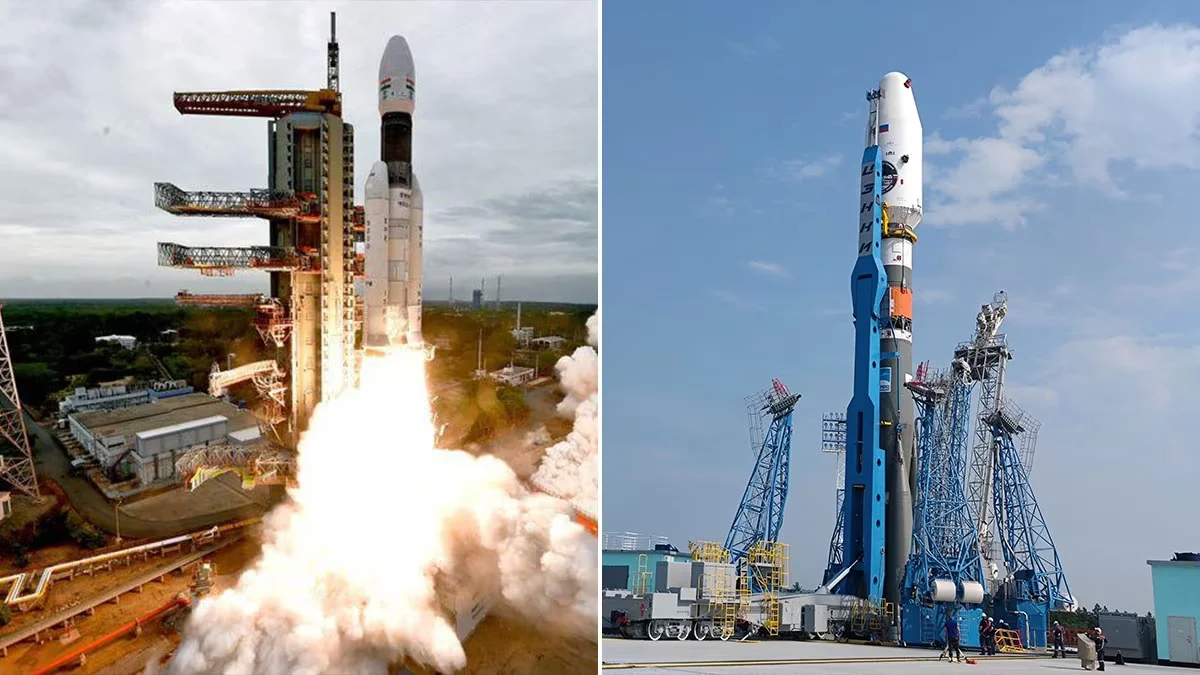India’s anticipation for its upcoming lunar mission is reaching its climax as it targets the relatively uncharted southern pole of the moon. Scheduled for August 23, the Chandrayaan-3 mission recently achieved a pivotal milestone as its lander successfully detached from the propulsion module, marking the beginning of the mission’s final phase. However, a newly launched Russian mission, Luna-25, adds a competitive edge to the global lunar exploration race.
The lunar exploration landscape gains a new dimension with the simultaneous efforts of India’s Chandrayaan-3 and Russia’s Luna-25. Launched with remarkable speed on August 10, Luna-25 aims to make a soft landing by August 21 or 22, potentially outpacing India’s mission.
Amid this race, India stands poised to enter an exclusive league comprising only four countries— the United States, the former Soviet Union, China, and now potentially India—that have successfully executed delicate lunar landings.
Launched on July 14, Chandrayaan-3 embarked on a slightly unconventional path, orbiting Earth multiple times before reaching lunar orbit on August 5. In preparation for its impending landing, the spacecraft has maintained its lunar orbit.
While observers may coin this situation a “mini space race,” the Indian Space Research Organisation (Isro) emphasizes the collaborative nature of the endeavor. Isro highlights that their mission timeline was determined by factors such as spacecraft readiness and technical windows. Similarly, Russia’s pre-planned Luna-25 mission underscores the joint pursuit of scientific knowledge.
Chandrayaan-3 is poised to build upon the insights gleaned from India’s previous lunar expeditions. Notably, the groundbreaking 2008 mission confirmed the presence of water molecules on the moon’s parched surface. Valuable lessons from the challenges encountered during Chandrayaan-2’s landing phase have informed Chandrayaan-3’s preparations.
Chandrayaan-3’s architecture encompasses a 1,500kg lander module named Vikram, accompanied by the 26kg rover Pragyaan. This dynamic duo’s mission entails surface exploration, vital data collection, and transmission of captivating lunar images back to Earth.
Both Chandrayaan-3 and Luna-25 share a common objective—revealing the enigmatic water ice at the moon’s south pole. This resource holds paramount importance for future lunar habitation and as a potential propellant source for interplanetary voyages. The focus on the southern pole is strategically driven by the prevalence of permanent shadows, indicating the possible presence of water deposits.
As India’s Chandrayaan-3 approaches its southern pole landing and Luna-25 makes rapid progress, the world watches a captivating “mini space race.” This spirited endeavor not only showcases humanity’s thirst for exploration but also contributes significantly to our understanding of the moon’s intricacies and its relevance to the future of space exploration.




